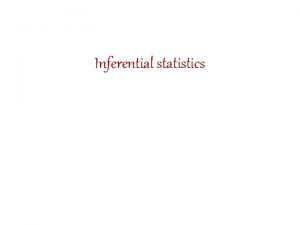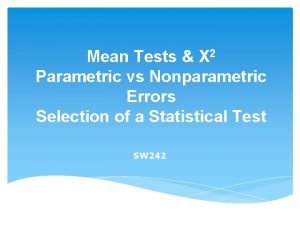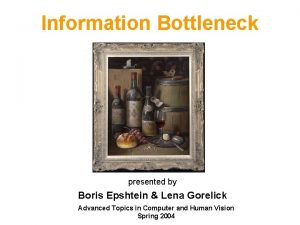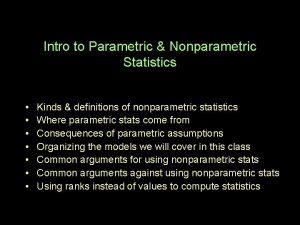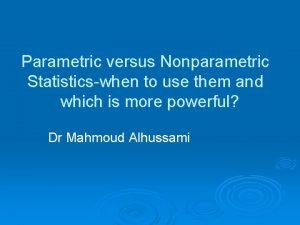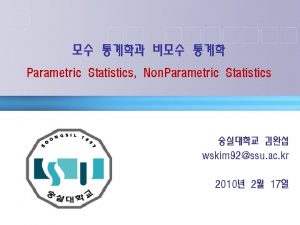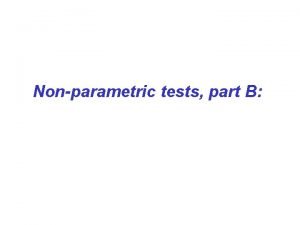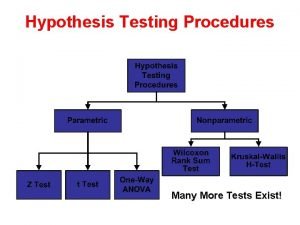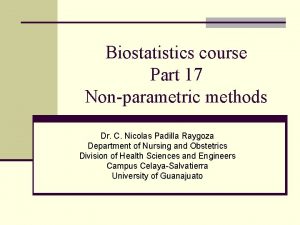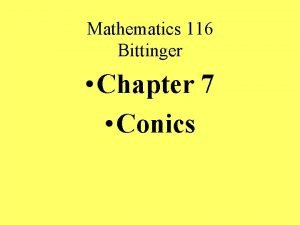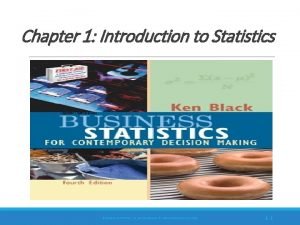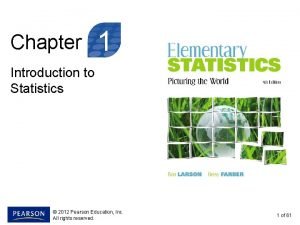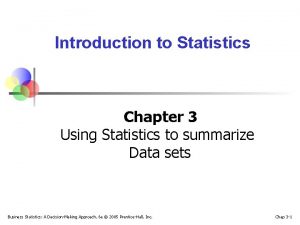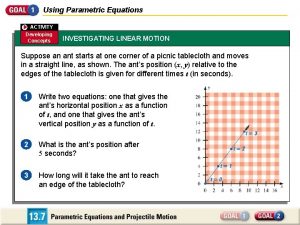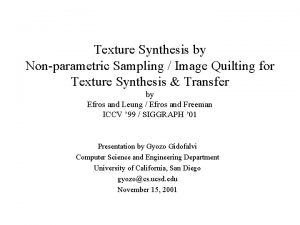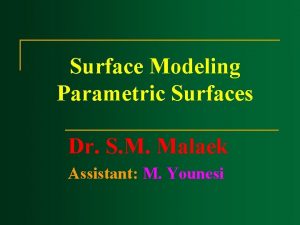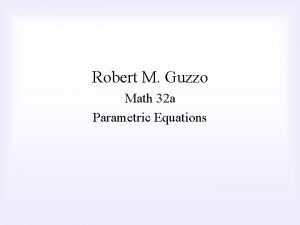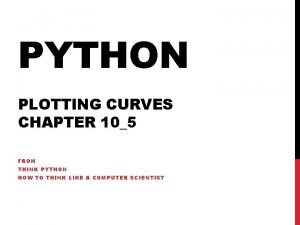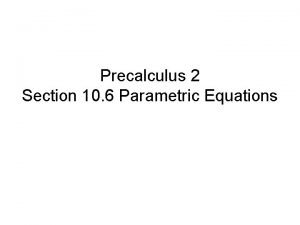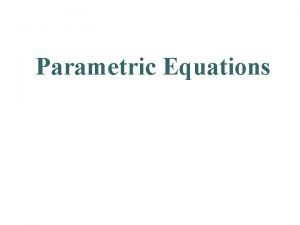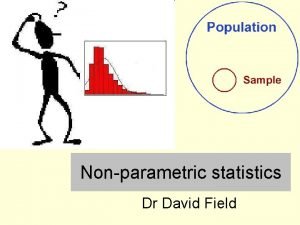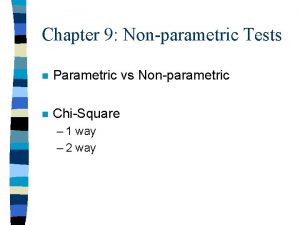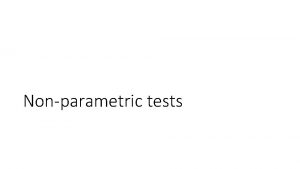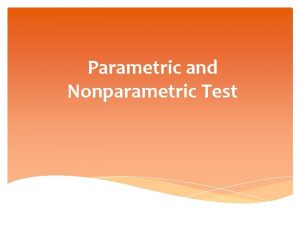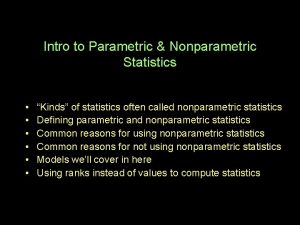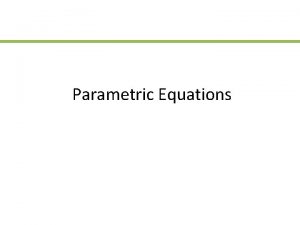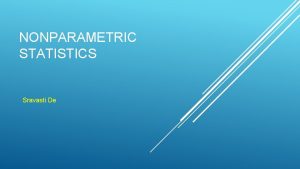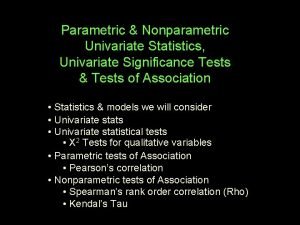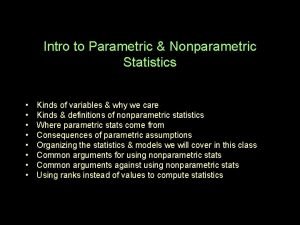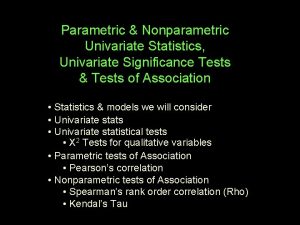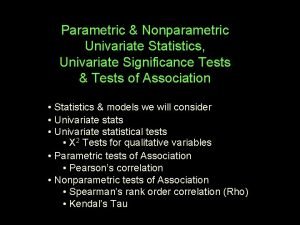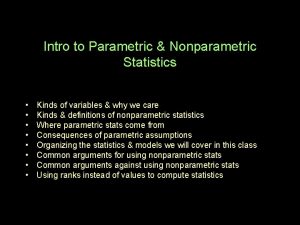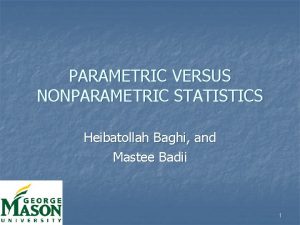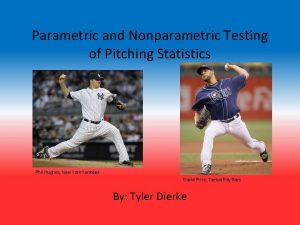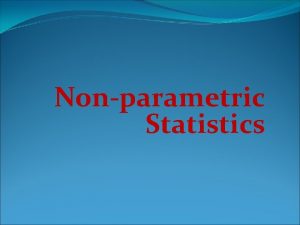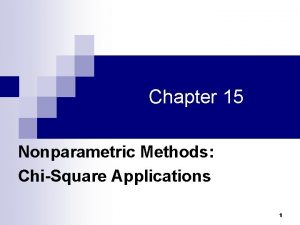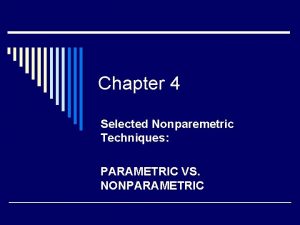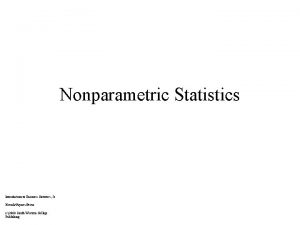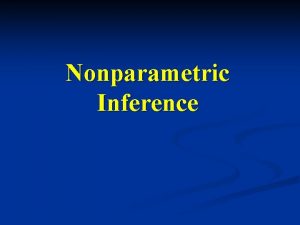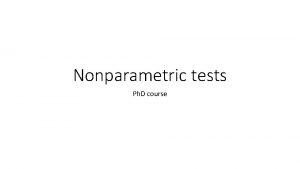Chapter 7 Nonparametric Statistics 7 1 Introduction Parametric
























- Slides: 24

Chapter 7 Nonparametric Statistics

7. 1 - Introduction • Parametric tests – Have a requirement about the distribution of the population • Nonparametric tests – Have no such requirement

7. 2 – The Sign Test •

The Sign Test •

Example 7. 2. 1 The first row of the table below shows the number of children’s books in 11 randomly selected homes with children in a town. Use the data to test the claim that the median number of books in homes with children in this town is greater than 12.

Example 7. 2. 1 •

7. 3 – The Wilcoxon Signed-Rank Test •

Test Statistic •

The Wilcoxon Signed-Rank Test •

The Wilcoxon Signed-Rank Test •

Example •

7. 4 – The Wilcoxon Rank-Sum Test There are two commonly used techniques for throwing a shot put: glide and rotational. The first and third rows of the table below give the maximum distances (in m) of 12 different athletes using the glide method and 13 athletes using the rotational method at international competitions (data collected by David Meyer, 2010). Use this data to test the claim that there is not a significant difference between these two methods.

The Wilcoxon Rank-Sum Test •

Theorem 7. 4. 1 •

The Wilcoxon Rank-Sum Test •

The Wilcoxon Rank-Sum Test •

Example •

7. 5 – The Runs Test for Randomness Purpose: To test the claim that a set of data with two types of values is arranged randomly Definition 7. 5. 1 A run is a sequence of data of the same type preceded and followed by data of a different type or by no data at all

Example 7. 5. 1 •

Theorem 7. 5. 1 •

Theorem 7. 5. 1 •

The Runs Test for Randomness •

Example 7. 5. 1 •

Example 7. 5. 1 Conclusion – Do not reject H 0 – It appears that the songs are randomly chosen
 Experimental hypothesis
Experimental hypothesis Parametric vs nonparametric test
Parametric vs nonparametric test Parametric test and non parametric test
Parametric test and non parametric test Parametric nonparametric 차이
Parametric nonparametric 차이 Univariate statistical tests
Univariate statistical tests Parametric and non parametric algorithms
Parametric and non parametric algorithms Parametric vs non parametric test
Parametric vs non parametric test Cramers v interpretation
Cramers v interpretation Parametric statistics
Parametric statistics When do we use friedman test
When do we use friedman test Mann-whitney u test vs t-test
Mann-whitney u test vs t-test Nonparametric methods
Nonparametric methods Introduction to statistics what is statistics
Introduction to statistics what is statistics Chapter 7 conic sections and parametric equations
Chapter 7 conic sections and parametric equations Chapter 1 introduction to statistics
Chapter 1 introduction to statistics Chapter 1 introduction to statistics
Chapter 1 introduction to statistics Introduction to statistics chapter 3 answers
Introduction to statistics chapter 3 answers In a pumpkin tossing contest in morton illinois
In a pumpkin tossing contest in morton illinois Texture synthesis by non-parametric sampling
Texture synthesis by non-parametric sampling Parametric surface modeling
Parametric surface modeling Parametric equations word problems
Parametric equations word problems Matplotlib parametric plot
Matplotlib parametric plot How to solve parametric equations
How to solve parametric equations Parametric insurance nat cat
Parametric insurance nat cat Cartesian equation
Cartesian equation
